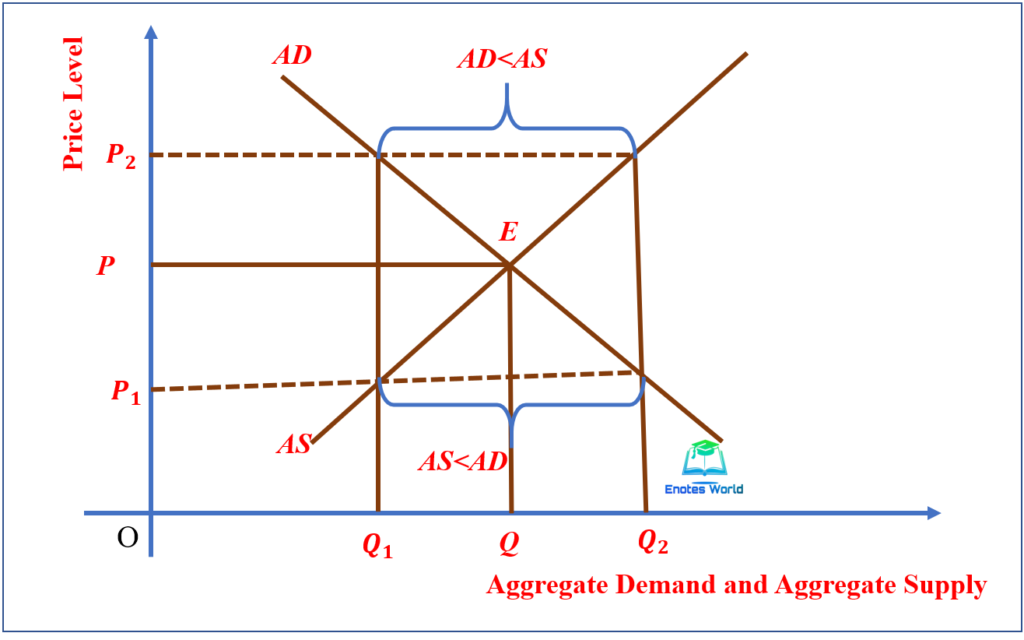Introduction
The term equilibrium in the ordinary sense is a state of balance. It indicates the case in which the forces working in the opposite directions are in the position of balance. Equilibrium condition refers to the state from where there is no tendency to change until there is a change in the forces influencing equilibrium. Therefore, the concept of equilibrium refers to a state of rest. Here we talk about the concept of equilibrium and disequilibrium.
The concept of equilibrium and disequilibrium are extensively used in microeconomic and macroeconomic analysis. The use of the concept of equilibrium and disequilibrium in microeconomics and macroeconomics is briefly discussed.
Concept of Equilibrium
In economics, equilibrium can be defined as the condition or situation in which opposing economic forces such as supply, demand, cost, and benefits, or cost and revenue, etc. are in balance and there is no tendency to deviate from that position.
In the context of microeconomics, equilibrium refers to a situation in which the quantity demanded of a commodity equals the quantity supplied of the commodity. Therefore, it refers to the balance between opposite forces of demand and supply. In microeconomics, the equilibrium occurs when the quantities demanded and supplied are equal.
In the context of macroeconomics, equilibrium occurs when aggregate demand equals aggregate supply and total investment equals saving in the economy. In the condition of macroeconomic equilibrium, the economy obtains an equilibrium level of national output and income.
Concept of Disequilibrium
The condition other than equilibrium is known as disequilibrium. It means when the opposite economic forces are not in the situation of equality or balance then it is known as disequilibrium. The continues functioning of the economic behavior of individuals creates disequilibrium in the economy. Regarding microeconomics, the situation of quantity demanded is not equal to the quantity supplied, which is called disequilibrium.
In terms of macroeconomics, when the economy faces different fluctuations and policy impacts then there may be the case of imbalance between aggregate demand and aggregate supply, investment and saving as so on. Such a state is known as disequilibrium in macroeconomics. Macroeconomic, as well as microeconomic disequilibrium, may occur because of different internal as well as external shocks mainly caused by the ever-changing behavior of the individuals.

The above diagram shows downward-sloping aggregate demand and upward-sloping aggregate supply curve as AD and AS. Both curves AD and AS intersected with each other at point E. Thus, point ‘E’ is known as equilibrium in macroeconomics. At the point of equilibrium, the aggregate demand is equal to aggregate supply, and the OQ level of national output is measured with corresponding price level OP.
Also, see Static and Dynamic Analysis of Macroeconomics
At any price level above and below OP level (say OP1 and OP2) aggregate demand and aggregate supply are not equal. At price OP2, aggregate demand is greater than aggregate supply (excess demand) and at OP1 price level aggregate supply is greater than aggregate demand (excess supply). The situation of excess demand and excess supply is called disequilibrium.